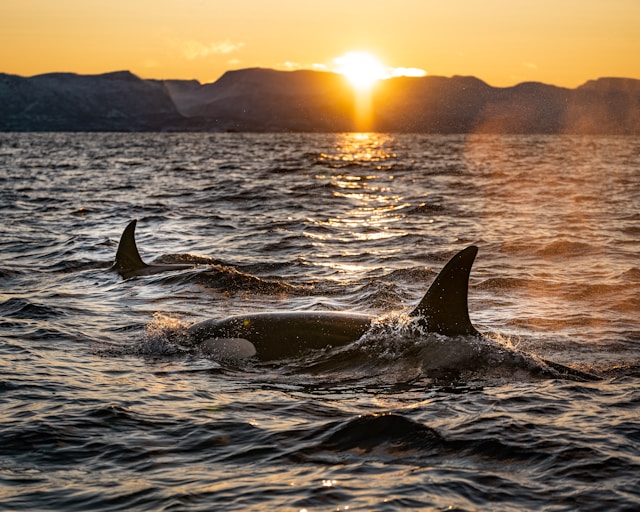Orcas, also known as killer whales, are some of the most fascinating and intelligent creatures in the ocean. Their striking black and white appearance, complex social structures, and impressive hunting skills make them a subject of endless curiosity. Here are ten captivating facts about orcas that highlight their uniqueness and wonder.
1. Top Ocean Predators
Orcas are apex predators, meaning they have no natural enemies. They sit at the top of the marine food chain and can hunt a wide range of prey, including fish, seals, dolphins, and even other whales. Their hunting techniques are sophisticated and adapted to their environment, making them one of the most effective predators in the ocean.
2. Complex Social Structures
Orcas live in highly organized social groups called pods. These pods are usually led by a matriarch, and members stay together for life. Their social structure is matriarchal, and the bonds within a pod are strong. Each pod has its own unique set of vocalizations, or “dialect,” which helps them communicate and coordinate their activities.
3. Diverse Diets
Orcas have diverse diets, which vary depending on their location and the season. Some pods specialize in hunting specific prey. For example, “resident” orcas in the Pacific Northwest primarily eat fish, particularly salmon, while “transient” orcas in the same region hunt marine mammals like seals and sea lions.
4. Intelligent Problem Solvers
Orcas are known for their high intelligence and problem-solving abilities. They have large, complex brains and exhibit behaviors that indicate advanced cognitive functions, such as using tools, playing, and teaching younger orcas. Their intelligence rivals that of primates and dolphins.
5. Impressive Communication Skills
Orcas communicate using a variety of sounds, including clicks, whistles, and pulsed calls. These sounds serve different purposes, such as navigation, hunting, and social bonding. Each pod’s unique dialect can be recognized and distinguished from others, much like human languages.
6. Long Lifespans
Orcas can live a remarkably long time, with females typically living longer than males. Females can live up to 90 years, while males usually live up to 50-60 years. The longevity of orcas contributes to their complex social structures and the passing down of knowledge through generations.
7. Cultural Behaviors
Orcas exhibit cultural behaviors that are passed down through generations. Different pods have distinct hunting techniques, social rituals, and vocalizations. For example, some orcas in the Arctic use a technique called “wave hunting” to wash seals off ice floes. These behaviors are learned and shared within the pod.
8. Worldwide Distribution
Orcas are found in all of the world’s oceans, from the icy waters of the Arctic and Antarctic to the warm, tropical seas. They are highly adaptable and can thrive in a variety of marine environments, from deep offshore waters to coastal regions.
9. Breaching and Spyhopping
Orcas are known for their acrobatic behaviors, such as breaching and spyhopping. Breaching involves leaping out of the water and crashing back down, which may serve various purposes like communication, play, or removing parasites. Spyhopping is when an orca vertically raises its head out of the water to look around, giving them a better view of their surroundings.
10. Conservation Status
While orcas are not currently considered endangered as a species, certain populations are at risk. For example, the Southern Resident killer whales in the Pacific Northwest are critically endangered, with only about 75 individuals remaining. Threats to orcas include pollution, depletion of prey, and noise from vessels and industrial activities.

